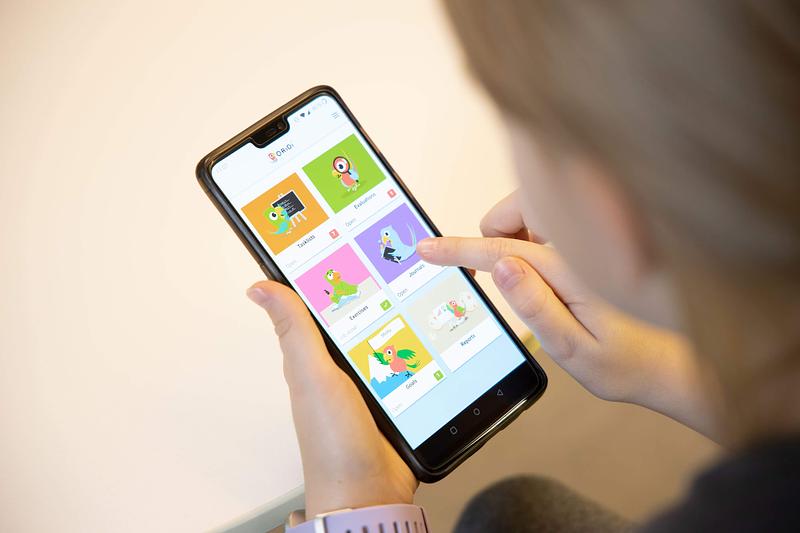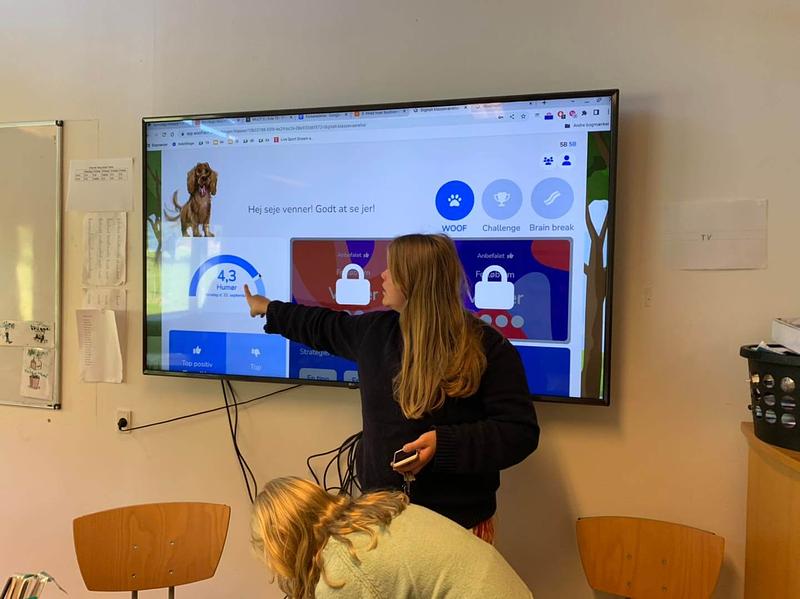Formative assessment is an essential way to enhance student learning. It puts the learner at the centre of the learning process and helps them to understand what they are learning, how they are learning, and how they can continue towards reaching their learning goals. Innovators from around the world are making it easier for educators to measure student learning and wellbeing, such as through formative assessment. Qridi, Navigated Learning Collaborative, Closegap, WOOF, and Process-oriented child monitoring (POM) are examples from the 2024 Global Collection who are shaping the future, ensuring that all students are heard.
Keeping track of learner progress

Student using the Qridi platform
For example, Qridi is a digital platform that enables students to plan and monitor their learning as a journey to motivate and inspire learning. “As students learn to better understand their learning journey, they develop a sense of ownership for it, which increases their motivation. Being able to do introspection and make independent, informed choices about one's own ongoing learning process is a strong predictor of academic success.” explains Juhani Katajanmäki, Director of International Projects, Qridi.

Qridi dashboard analysis
Navigated Learning Collaborative was created to provide teachers with accurate data about a student’s current learning level to help move them on an individualised path to reach their learning destination. The Learning Navigator platform breaks down learning into building blocks - competencies that are mapped to global standards that can be used by anyone. Educators can then use assessments and learning resources tagged to competencies to tailor instruction to student needs. Mr. Sanjay Kakade of Manvat CPS explains how he uses the programme to help improve instruction in the classroom: “This tool is helping us understand the learning level status of our class. We are getting results of assessment within minutes, so it is helping us to prepare the further plan for children’s learning. Navigator is also supporting us by providing teaching and learning material. Students' learning level can be found on a single screen, so it becomes easy to track child learning proficiency for continuous comprehensive evaluation.”
Students using Navigated Learning Collaborative in Uttarakhand, India
Taking a look at student wellbeing
While monitoring student learning progress is important and effective in improving learning outcomes, we must also take student wellbeing into consideration. Wellbeing is a critical aspect that affects students’ ability to perform at their best and is also a rising concern for society at large.
According to the latest OECD PISA results, students’ sense of belonging at school is declining and around 20% of school children experience mental health problems.
Closegap equips K-12 schools with the technology and data to more effectively address youth mental health and emotional wellbeing through a daily interactive check-in for students. Students respond to check-ins by providing information about their emotions, energy levels, and physical needs which is then delivered to educators and school counsellors through a dashboard.
.jpg)
Student answering Closegap check-in
Providing young people with a digital line of communication with school staff has been found to be more effective, especially for shy and quieter students. “Young people need a way to express themselves on their own terms and a digital space is a great way to provide that to them. We spent a lot of time working alongside students to ensure we were building an engaging, digital space where they feel excited to learn and comfortable to share.” explains Rachel Miller, Founder & CEO of Closegap.
"Young people need a way to express themselves on their own terms and a digital space is a great way to provide that to them." Rachel Miller, Founder & CEO, Closegap
These daily check-ins have given school staff a better view of the needs of their students. Schools using Closegap have even prevented suicides and uncovered cases of self-harm, sexual assault, bullying, trouble at home, and more.

Teacher showing WOOF classroom results
While Closegap has found the individualised reporting system effective, WOOF uses a holistic approach to monitor classroom wellbeing through anonymous digital check-ins. “In our experience, letting students be anonymous in the WOOF check-in provides more genuine answers, lowers the barriers for participation, and at the same time provides a foundation for the students to work together on their classroom collective, which is key to the development of individual and collective wellbeing.” explains Amalie Danckert, COO of WOOF.
WOOF advocates for a collective approach to improving the wellbeing of the classroom. Instead of zeroing in on the individual challenges students may face, Amalie Danckert proposes that "the sense-of-unity of the classroom collective significantly influences individual’s wellbeing. Establishing a collective environment where every student feels a sense of belonging, safety in expressing their emotions and in the ability to reflect on themselves through others can serve as a cornerstone for developing personal self-efficacy and wellbeing."
Supporting the youngest learners
Young learners spend a significant amount of time at school during a critical period of the development of their personality and socio-emotional competencies, making it a key place for supporting student wellbeing and mental health.

Students in a Vietnamese classroom where POM is used
Starting from early childhood education, it is important that teachers are equipped with ways to monitor students’ wellbeing. VVOB developed the process-oriented child monitoring (POM) tool to help early childhood educators in Vietnam to systematically observe and assess learners’ wellbeing and involvement using specific signs and scales.
“Children in my classes are becoming happier with class activities and are confident to express their interests to join a play corner.” – Preschool teacher from Quang Ngai province, Vietnam.
Giving teachers these tools allows them to “...continuously observe, analyse, and improve the activities via the action points that go hand in hand with POM to give children more chances for interactions, to create more opportunities for their own initiatives or for making choices as per their competences or interest.” explains Ms. Le Thi Dieu Phuc, Education Advisor VVOB Vietnam. Teachers express that being trained in POM has had a positive impact on their observation implementation. For example, a preschool teacher from Quang Ngai province, Vietnam has noticed that since implementing POM, “children in my classes are becoming happier with class activities and are confident to express their interests to join a play corner.”
Want to learn more about impactful education innovations? Check out the 2024 Global Collection report.
Working on your own innovation? Submit your innovation to be considered for the next collection.


